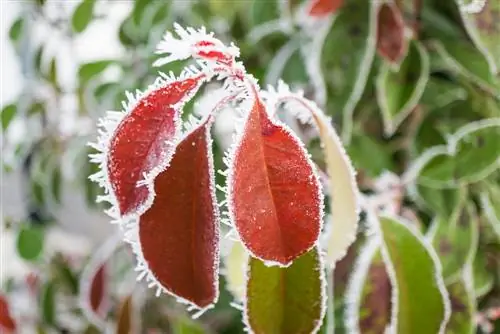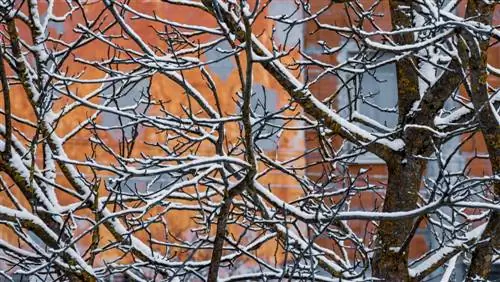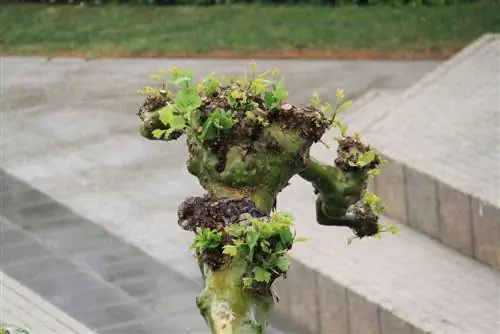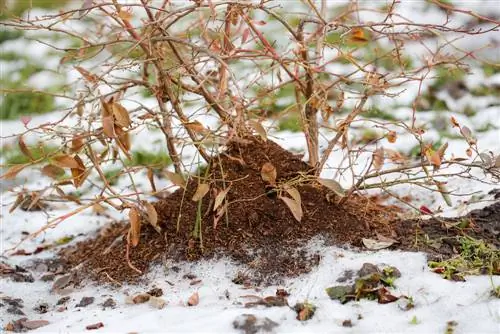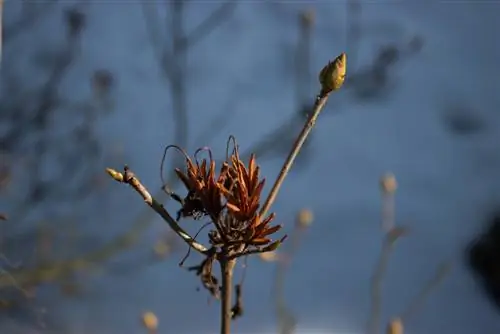- Author admin [email protected].
- Public 2023-12-16 16:46.
- Last modified 2025-01-23 11:22.
Ginkgo biloba - the ginkgo tree - is a living fossil, having survived millions of years on earth unscathed. The species proves to be extremely robust against diseases, pests and environmental influences. But what to do if the ginkgo has suffered frost damage?
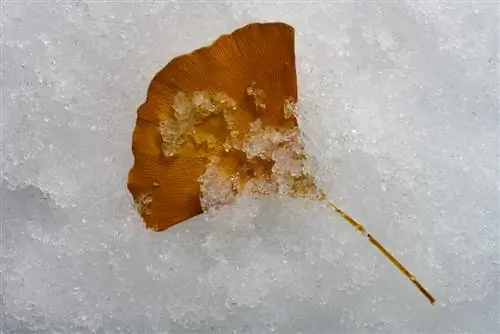
How do you identify and treat frost damage on ginkgo trees?
A ginkgo tree can suffer frost damage from late frost, especially young specimens. Signs of this include brown, drooping or curled leaves. If there is frost damage, you should be patient and wait, as the ginkgo usually sprouts again in early summer.
Can ginkgo trees suffer frost damage?
Of course, even a robust ginkgo tree can suffer frost damage! This particularly affectsyoung, trees that are not yet sufficiently stable, as well as young and old specimens that were surprised by alate frost after budding in spring.
Ginkgos grown in pots are also at risk of frost damage, because the small amount of substrate in such a planter freezes very quickly and offers little protection from icy temperatures. Such apotted ginkgo, like young trees, needs special horticultural attention.
Basically, a well-rooted Ginkgo biloba is veryhardy and can easily tolerate temperatures down to minus 25 °C.
How do you recognize frost damage to the ginkgo tree?
You can recognize possible frost damage to the ginkgo by theseSymptoms:
- brown discolored leaves
- leaves hanging
- or leaves curl up
- loses leaves (unusual time of year)
- Leaves remain small and crumble
- Shoots (especially shoot tips) appear dried out
In addition,Frost cracks in the bark can occur, which is particularly the case at sub-zero temperatures in very sunny locations. In general, the combination of “bright sunshine” and “dry frost” is dangerous for trees in winter: the warming sun rays cause the tree sap to flow. These in turn freeze and cause damage to the wood and bark.
How can you treat frost damage to the ginkgo?
First of all, you don't have to worry about your ginkgo dying - provided the tree has been in its location for a few years and is well rooted there. Young trees and potted specimens are more likely to be at risk of freezing, as they are less able to withstand forces.
The most important measure against frost damage is:Be patient and wait! The ginkgo will most likely sprout again byin early summer at the latest Then you can see exactly which parts of the plant are actually dead and can cut them off with sharp scissors (€14.00 at Amazon).
How do you protect a (young) ginkgo from frost damage?
To protect young ginkgo trees from frost damage, you should either cultivate them in a large pot for the first few years and overwinter frost-free or, especially in late winter or early spring, withwinter protection. A garden fleece or a jute wrapping filled with straw is suitable for this.
On the other hand, place aGinkgo in a pot on a thick surface made of wood or plastic and cover the planter with a warm coat (e.g. B. Garden fleece) and move it to a warm wall. You can also overwinter the potted ginkgo indoors, frost-free, at a maximum of 10 °C.
Tip
Be careful during the Ice Saints
The Ice Saints are three days in May during which icy polar air can bring us dangerous night frosts. They always appear in mid-May, even when the weather has been warm and sunny.


